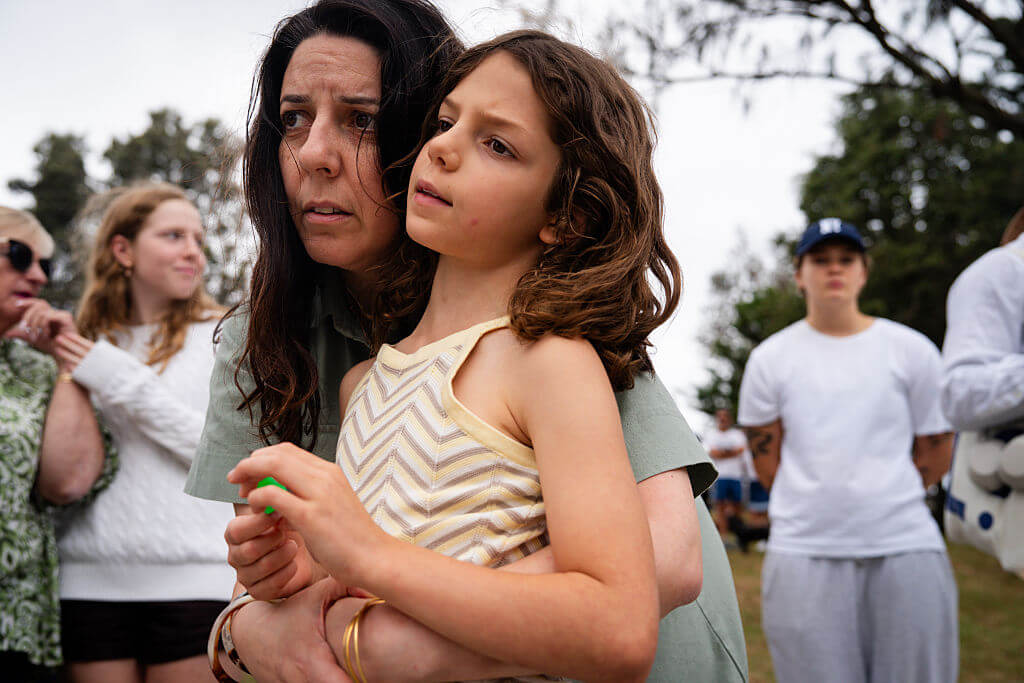From IDF to the Catwalk

Graphic by Angelie Zaslavsky
Walking into New York’s Lincoln Center, a venue at this year’s Mercedes-Benz Fashion Week, is like entering an alternate universe. Muscled security guards watch over the doors, making sure only ticket-holders or grungy looking camera crews make it past their presence. Back stage, models, who all seem to look alike, disappear in and out of black curtained areas, getting final touches on their make-up, outfits and hair. Out of all the chaos and activity emerges Gita Sidikman, a little-known Israeli designer who seems poised to join fashion’s big leagues.
While the famous names of fashion — Nicole Miller and Diane Von Furstenberg — are mostly showing later on in the week, a few of the early shows are dedicated to the work of student designers. And this one, hosted Thursday evening by the Art Institute of New York, seems to be all about Sidikman, even though eleven other designers are exhibiting their work. Before the show, everybody from the public relations manager to the photographer seem to be calling her name, trying to get her attention. The goody bags that await each ticket holder contain promotional materials for her design, a tote bag that reads “Gita Omri” (her brand name; “Omri” means “my nation” in Hebrew) and a hand-written note from her thanking them for attending. While all the other students had to go through a demanding audition process to be in the show, Sidikman was the only one to be asked to join by the producers.
Sidikman is passionate about design, because for her, it’s still a new discovery. “I’m not one of these girls who wanted to go into fashion my entire life,” she says. “Everybody’s like that.” But Sidikman didn’t begin designing until she was in the Israel Army.
Growing up in the Old City of Jerusalem and later Efrat, Sidikman always looked forward to her time in the army. “I am very connected to my Jewish roots, and I am very much in love with Israel and the idea of Israel,” she says. “To me, doing the two years in the army is giving a piece of yourself to the country and being a part of something and not just living someplace.” But only once she got there did she realize she could use the opportunity to take evening classes on the side. Thinking she might be interested in event production, she enrolled in a design school in Tel Aviv, but soon ended up taking styling classes. She remembers one day in class when she saw a dress by Alexander McQueen that “just took my breath away…that was my turning point, I think, when I said, ‘I want to do that.’” And the army not only provided her first exposure to design; it also gave her the skills to follow through on projects, something she always found difficult, until she learned discipline from her days in the service.
When seeing her show, it’s hard to imagine that Sidikman ever struggled. Her designs, on display later that night on the catwalk, scream confidence, freedom, and sexiness. The clothes were cut from bright orange fabric and black leather; many of the models wore over-sized motorcycle helmets, meant to evoke the freeing feeling of a ride on the open road. Audience members, including many seasoned fashionistas, gasped over some items. When Sidikman walked to end of the catwalk at the end of her show — blushing but smiling very widely — they awarded her a standing ovation .
But in fact, when she first got out of the army, Sidikman did not have an easy time. The Shenkar College of Engineering and Design in Tel Aviv and the Fashion Institute of Technology in New York City turned down her admissions applications. “They just turned me away and said this is not for you,” she remembers. “And it kind of crushed me…I didn’t know what to do with myself.” But Sidikman persisted.
Now, she is headed to London where she will attend the prestigious Central Saint Martins College of Art and Design, an experience she hopes will inspire her designs even more. (“Really to be truly free to be as creative as you want, you can only do that as a student,” she says.) And most importantly, she’ll keep having adventures that shape her work and who she is today. After all, she says, “If someone’s coming to read your article, or look at my collection, or see someone’s painting, they are judging you. Because the work comes from you. When it’s artistic, it’s so personal.”
















